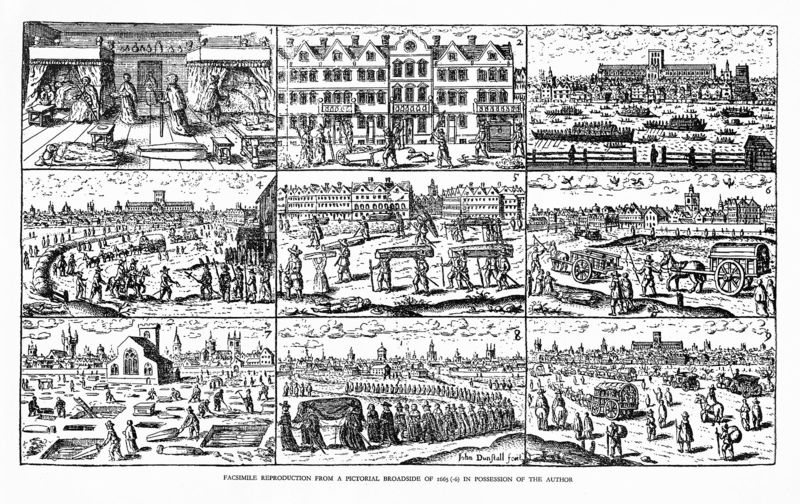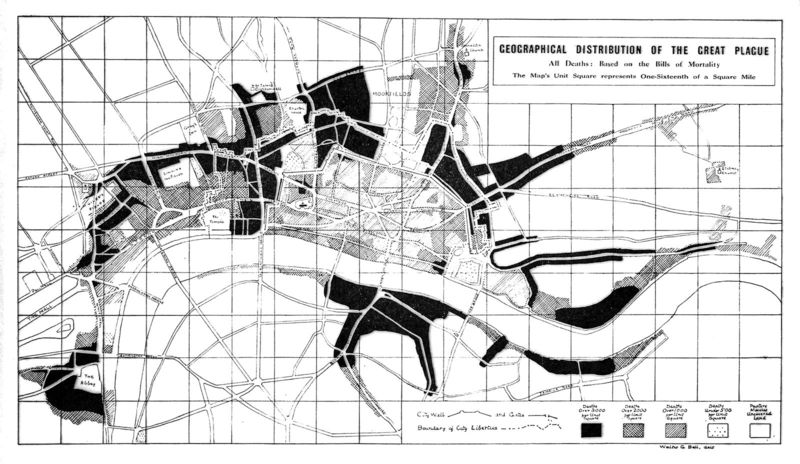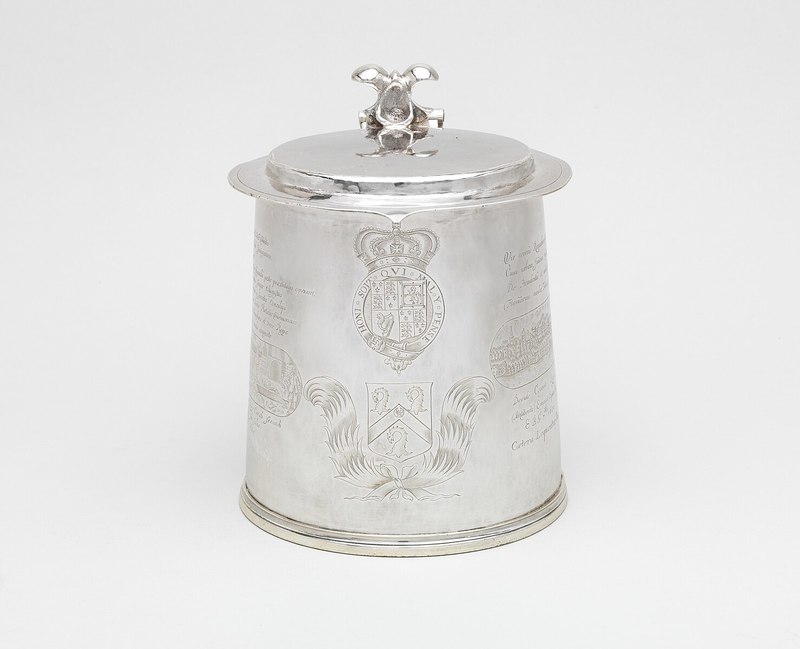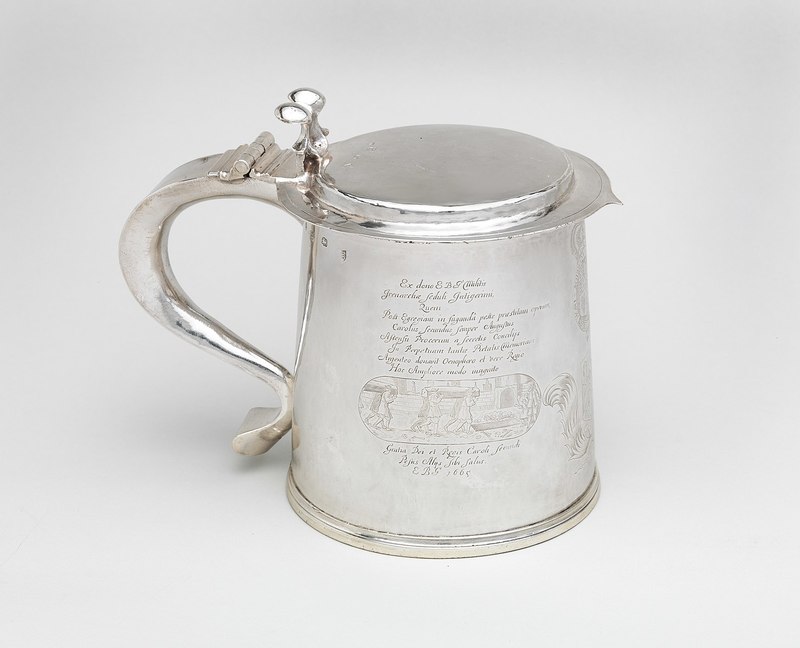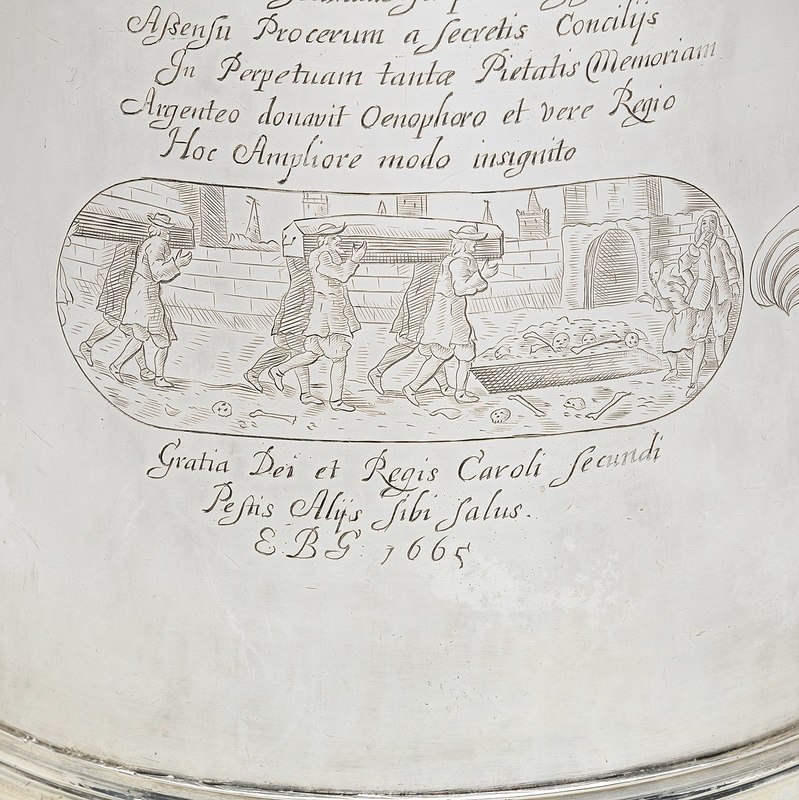The Great Plague of London, 1665-1666.
The Great Plague of London (1665-1666) spread through the city during a time of great political change and social disruption, aligning with the Stuart Restoration and the Great Fire of London. An estimated 100,000 people died from the plague from symptoms such as fever, vomiting, coughing up blood, painful swelling, and hysteria (“The Great Plague”). The Great Plague encouraged significant social, political, and medical responses to plague, inspiring development in medical understandings and practices, governmental action through public health measures, and increased sanitation and better housing in the densely populated London (Mullett 1946, 304).
This silver tankard is part of a collection of six others commissioned by Sir Edmund Berry Godfrey, the Justice of Peace for His Majesty Charles II, for his friends (Banister 1967, 356). The tankard is engraved with depictions of the Great Fire and the Great Plague of London in commemoration of his services to the city as a magistrate during these events. The Great Plague engraving depicts a mass burial of victims of the plague and is accompanied by a Latin inscription honouring Godfrey’s role in lessening the plague’s devastating effects. It also includes a reference to a silver flagon gifted to Godfrey from Charles II in recognition “of his faithfulness to duty” (358).
